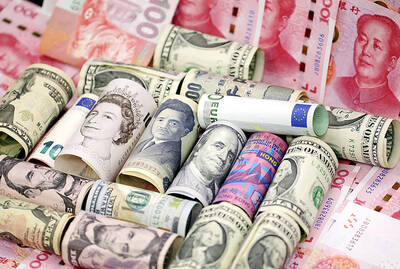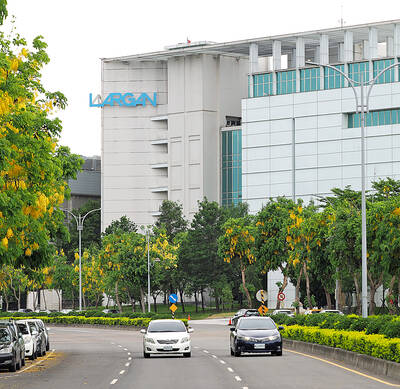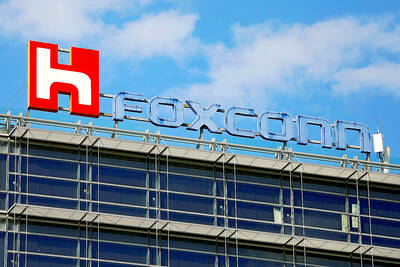AU Optronics Corp (AUO, 友達光電) last month reclaimed its long-lost second-place TV panel supplier ranking in China as its new LCD TV panels revived stagnant demand in a Chinese market depressed by oversupply, a local market researcher said yesterday.
The Chinese market played a key role in supporting Taiwanese panel makers’ growth during the downturn in 2008-2009, when the TV market in the US and European markets slowed. This year, local panel makers lost this support as TV growth in China turned stagnant as well.
However, starting this month, China’s six major TV brands are expected to increase orders by more than 28 percent to 4.3 million units to build inventory for the Lunar New Year holiday shopping season, after cutting orders by 19 percent last month amid inventory digestion, WitsView, an LCD research team from Taipei-based TrendForce Corp (集邦科技), said in its latest report.
This new momentum is expected to “help to stabilize [panel] prices in the fourth quarter. And we also see some rush orders coming in,” WitsView analyst Burrell Liu (劉陳宏) said in the report.
Last month, AU Optronics outranked Samsung Electronics Co and LG Display Co by seizing a 23 percent share of the total panels purchased by Chinese TV makers including Hisense Electric Co (海信), TCL Corp and Skyworth Group (創維), according to the report. WitsView did not reveal the market shares of Samsung and LG Display.
Two months ago, AU Optronics ranked No. 4, with a 19 percent share, behind LG Display, Samsung and Chimei Innolux Corp (奇美電子), WitsView said.
Chimei, retaining its top position, captured 31 percent of the Chinese market last month, up from 29 percent in the previous month, WitsView said.
“AU Optronics and Chimei have developed new sizes of LCD panels, with 39-inch and 50-inch screens for TVs.
Those products attracted lots of interest and orders from China’s main TV brands and global TV makers, creating some excitement in the dull market, Liu said in the report.
In addition to Samsung, LG Electronics Co, Sony Corp, Toshiba Corp and Panasonic Corp are using, or about to use, those 39-inch and 50-inch panels from AU Optronics and Chimei in their new TVs, Liu said.
Samsung and LG Display did not supply customers with 39-inch and 50-inch TV panels, according to WitsView. Instead, Samsung offered 43-inch and 48-inch LCD TV panels exclusively for the Chinese market, the report said.

Taiwan’s foreign exchange reserves hit a record high at the end of last month, surpassing the US$600 billion mark for the first time, the central bank said yesterday. Last month, the country’s foreign exchange reserves rose US$5.51 billion from a month earlier to reach US$602.94 billion due to an increase in returns from the central bank’s portfolio management, the movement of other foreign currencies in the portfolio against the US dollar and the bank’s efforts to smooth the volatility of the New Taiwan dollar. Department of Foreign Exchange Director-General Eugene Tsai (蔡炯民)said a rate cut cycle launched by the US Federal Reserve

Handset camera lens maker Largan Precision Co (大立光) on Sunday reported a 6.71 percent year-on-year decline in revenue for the third quarter, despite revenue last month hitting the highest level in 11 months. Third-quarter revenue was NT$17.68 billion (US$581.2 million), compared with NT$18.95 billion a year earlier, the company said in a statement. The figure was in line with Yuanta Securities Investment Consulting Co’s (元大投顧) forecast of NT$17.9 billion, but missed the market consensus estimate of NT$18.97 billion. The third-quarter revenue was a 51.44 percent increase from NT$11.67 billion in the second quarter, as the quarter is usually the peak

Nvidia Corp’s major server production partner Hon Hai Precision Industry Co (鴻海精密) reported 10.99 percent year-on-year growth in quarterly sales, signaling healthy demand for artificial intelligence (AI) infrastructure. Revenue totaled NT$2.06 trillion (US$67.72 billion) in the last quarter, in line with analysts’ projections, a company statement said. On a quarterly basis, revenue was up 14.47 percent. Hon Hai’s businesses cover four primary product segments: cloud and networking, smart consumer electronics, computing, and components and other products. Last quarter, “cloud and networking products delivered strong growth, components and other products demonstrated significant growth, while smart consumer electronics and computing products slightly declined,” compared with the

The US government on Wednesday sanctioned more than two dozen companies in China, Turkey and the United Arab Emirates, including offshoots of a US chip firm, accusing the businesses of providing illicit support to Iran’s military or proxies. The US Department of Commerce included two subsidiaries of US-based chip distributor Arrow Electronics Inc (艾睿電子) on its so-called entity list published on the federal register for facilitating purchases by Iran’s proxies of US tech. Arrow spokesman John Hourigan said that the subsidiaries have been operating in full compliance with US export control regulations and his company is discussing with the US Bureau of